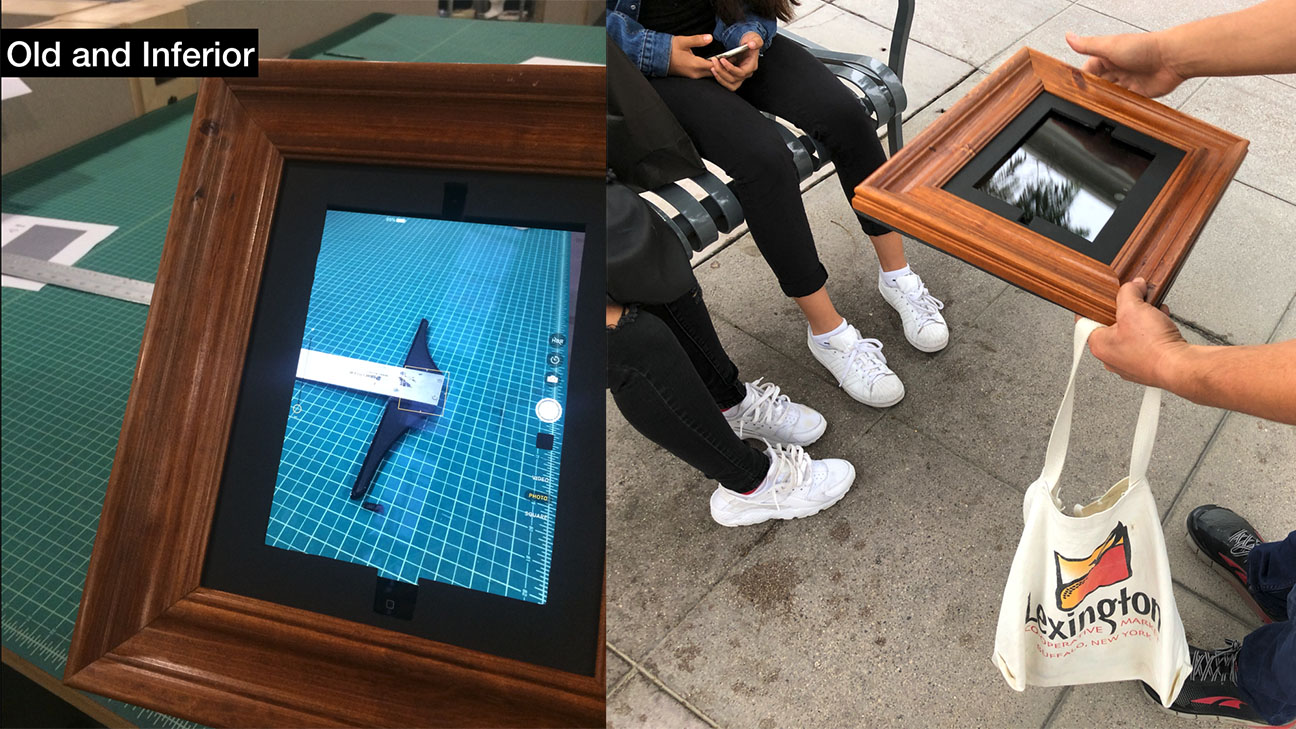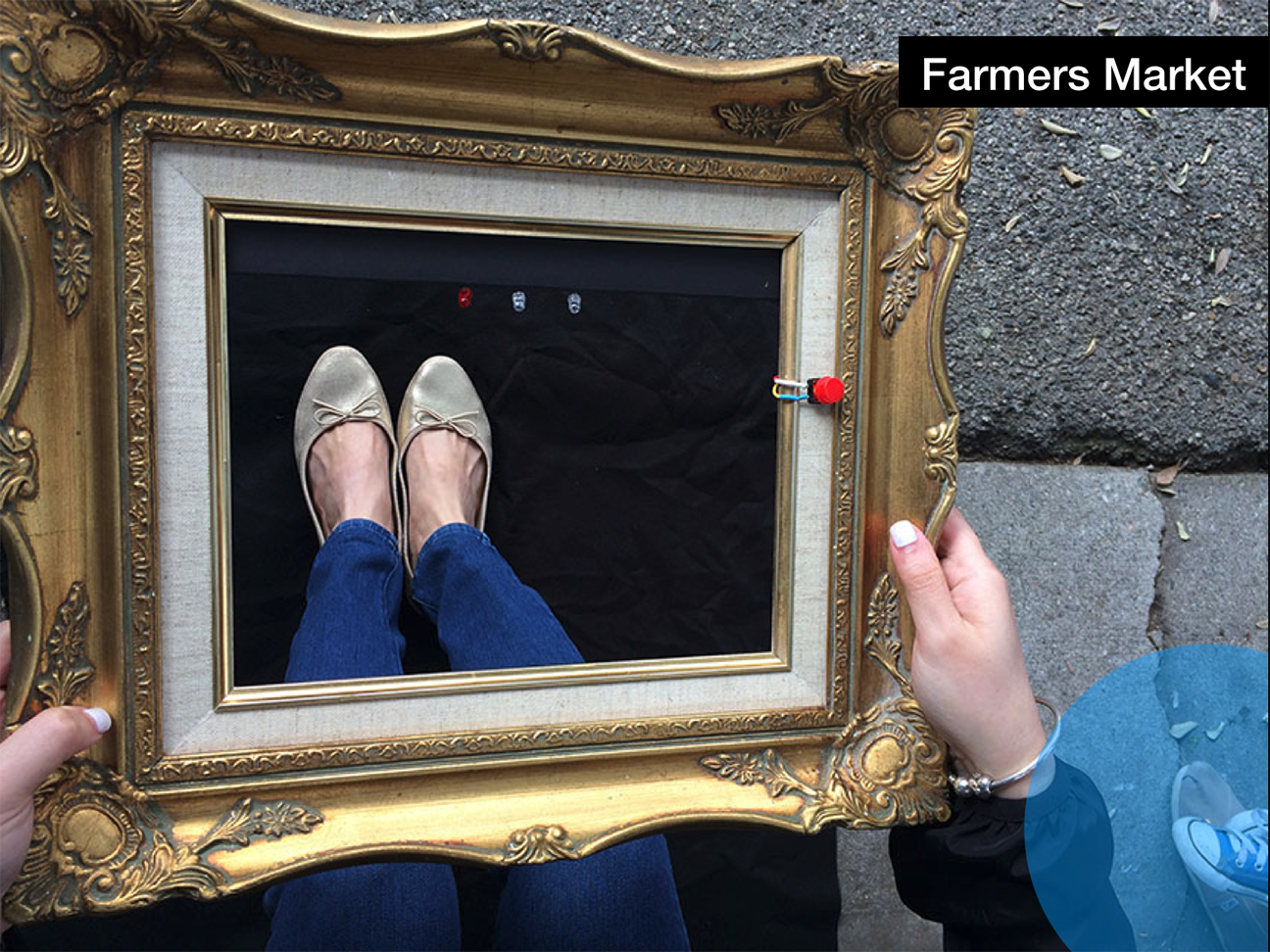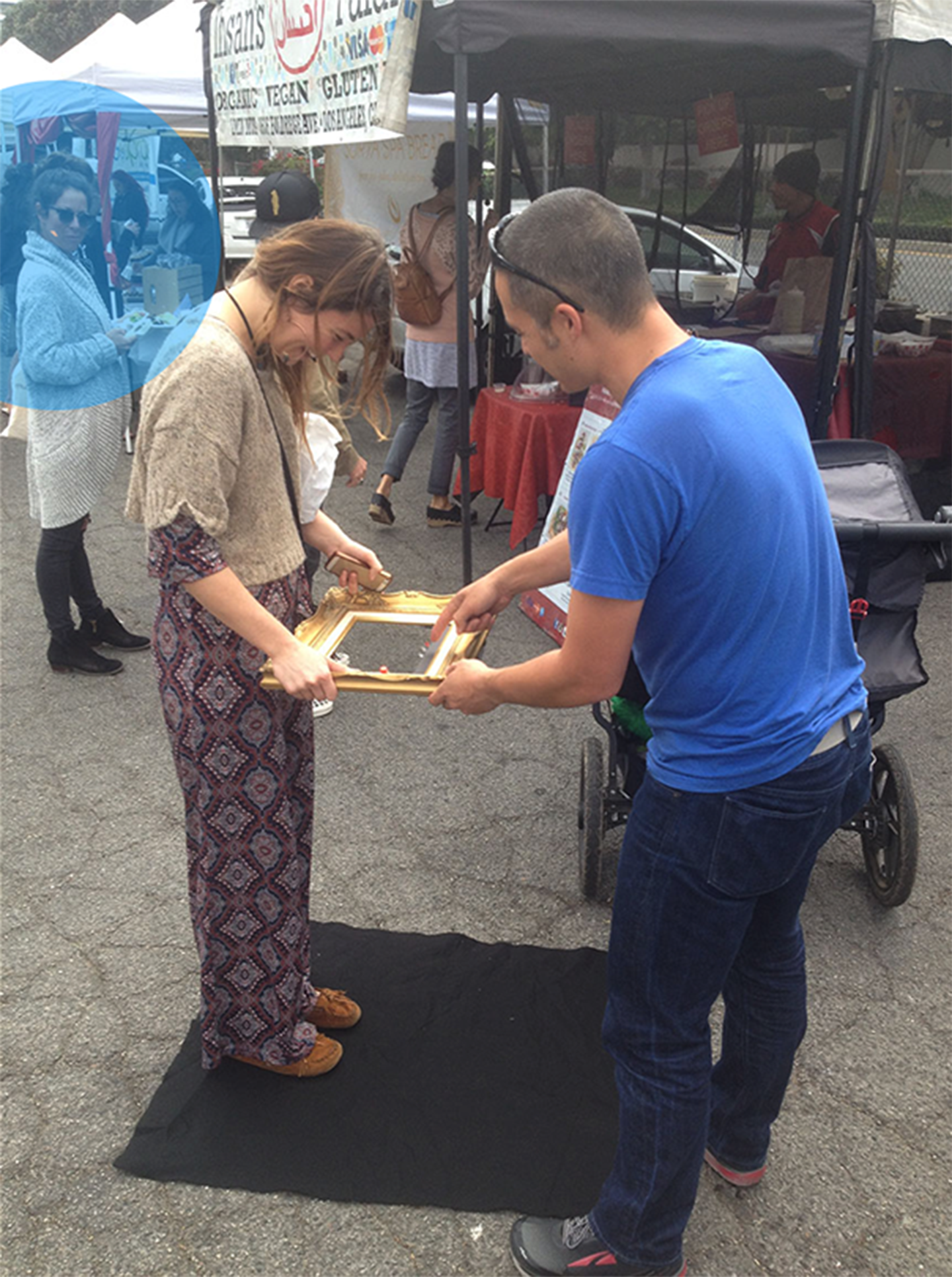Shoe Memoirs

OVERVIEW
My design intention for the Shoe Memoirs project was to uncover the hidden stories people attach to the shoes on their feet. I did this by offering shoe portraits to people. To elevate the significance of the shoe portrait, I used a solid black cloth as a backdrop. To provide a space for others to learn about the interactions, I created a blog with the portraits and transcribed stories.

PRESENTATION
In order to capture shoe portraits, I added technology to a picture less frame. Participants look through the frame at their shoes, then press a button to take a photo. The image is uploaded to a Tumblr page dedicated to the images and stories for the project. Here are three of the top insights from testing prototypes during the Shoe Memoirs project.
1. IF YOU BUILD IT THEY WILL COME
The humble beginnings of the "Old and Inferior" rapid prototype can be seen in the images below. The plain looking frame with an iPad mounted inside served me well as a way to get into the field and test. After speaking with a stranger and listening to their shoe story, I discovered that I took an almost apologetic approach of my using the frame to capture images of shoes. Although the idea for what this project might be, and how it might evolve was in my head, there was still a lot of room to develop the design and approach.
In the "New and Improved" picture, the tech and design were iterated upon, deployments were more successful and the frame helped me tell the story of Shoe Memoirs instead of me trying to sell something invisible. Now instead of me confusing people by pulling the old frame out a bag at the end of the engagement, I was able to own it was free to lead with the frame if appropriate. Also, the people became more invested in the interaction as they were able to take their own shoe memoir photos.


2. LOCATION, LOCATION, LOCATION
I learned from deploying my prototype that the frame and backdrop seemed to either attract or repel people. This behavior appeared to be largely dependent on location.
Farmers Market
There were several instances at the farmers market where someone was engaging with the frame and peripheral curiosity drew people in. In the example image below, the woman was so eager to see what was happening and use the frame she interjected in the conversation. The man I was speaking with moved to the side and she sat next to his family to take a picture. The shoes of this wife and child can be seen in the bottom right corner.
Boardwalk
Later the same day, about a quarter mile away, I had a completely different experience. People were practically repelled by the frame and backdrop and actively avoided me. I had a similar experience at a nearby popular shopping area, though not quite as extreme.
Upon reflection, I believe this stark difference occurred because people come to the farmers market as a destination with a sense of community and expect to talk to other people, farmers, etc. At the boardwalk, there may be an acceptance that you will see other people, but not necessarily engage with them. There is more movement, and when people are stationary they are often skeptical of strangers approaching them.


3. OWN IT
I learned a lot through the different iterations and prototype deployments. These experiences helped inform my approach in the field. Deployments became more comfortable as I gained knowledge of how to talk about the frame and adapt on the fly to gain and maintain engagement. In the example below, I was waiting for my lunch, and saw an opportunity to engage with someone who was also waiting for food. These relaxed interventions were very rewarding, empowering, ultimately led to more interaction. For example, in the background of this picture we see another instance of curiosity.

TECHNICALLY SPEAKING
For this project I used Python to program a Raspberry Pi and control a camera module. The program is triggered by pressing the red button. This initiates a short countdown (blinking red LED), after which the photo is saved to a micro SD card and uploaded to my Tumblr blog (blinking blue LED). Upon completion, the green LED flashes to tell you the upload and save were successful. The frame is then ready to take the next picture. The hardware, along with a battery pack was mounted to the back of the frame. Holes were drilled out for the LEDs and the button.



ADDITIONAL INFORMATION
I realized upon reflection that Shoe Memoirs is no longer just about strangers. This is as much about conversation with someone you may know and capturing their shoe stories.
The Tumblr page for Shoe Memoirs can be found at: tumblr.com/blog/shoememoirs
MATERIALS AND TOOLS
Raspberry Pi (A+ and 0w)
Pi camera module
Python
Various wires, LEDs, buttons
Battery pack
Picture frame
Foam core
Black felt
PROJECT BRIEF
Conduct field research looking at the relationships surrounding humans and technology. Develop and evolve a design intention where you use technology to create, foster, enable and facilitate interaction. Pay close attention to the exchanges that result from or are instigated by these productions—engagements, happenings, provocations, experiences. These two threads are commingled to offer new models for understanding and more importantly exploring interaction through making/prototyping.
In progress project critiques will drive general discussion of terms, considerations, and the specifics of form as embodiment of idea. Discussions will include both the possibilities and limitations of your proposition as well as how the material and experiential choices embody the intent.
CLASS
Dev Projects 1
INSTRUCTORS
Elizabeth Chin and Elise Co